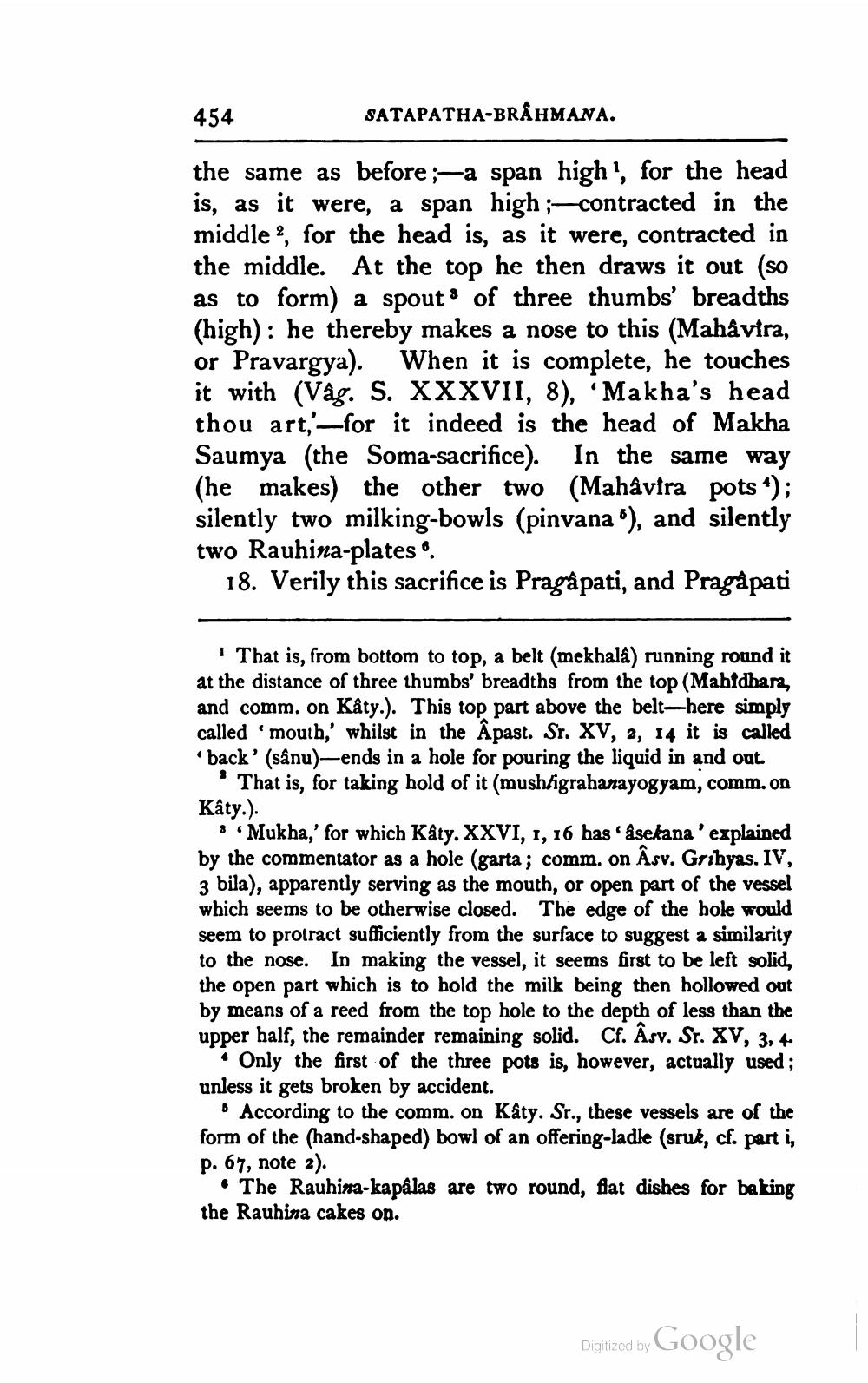________________
454
SATAPATHA-BRAHMANA.
the same as before ;—a span high ', for the head is, as it were, a span high ;-contracted in the middle ?, for the head is, as it were, contracted in the middle. At the top he then draws it out (so as to form) a spouts of three thumbs' breadths (high): he thereby makes a nose to this (Mahavira, or Pravargya). When it is complete, he touches it with (Våg. S. XXXVII, 8), “Makha's head thou art,'--for it indeed is the head of Makha Saumya (the Soma-sacrifice). In the same way (he makes) the other two (Mahavira pots “); silently two milking-bowls (pinvana"), and silently two Rauhina-plates.
18. Verily this sacrifice is Pragâpati, and Pragàpati
That is, from bottom to top, a belt (mekhala) running round it at the distance of three thumbs' breadths from the top (Mabidhara, and comm. on Kåty.). This top part above the belt-here simply called 'mouth, whilst in the Apast. Sr. XV, 2, 14 it is called "back' (sânu)-ends in a hole for pouring the liquid in and out
That is, for taking hold of it (mushtigrahanayogyam, comm. on Kâty.).
8 Mukha,' for which Katy. XXVI, 1, 16 has cásekana 'explained by the commentator as a hole (garta ; comm. on Åsv. Gribyas. IV, 3 bila), apparently serving as the mouth, or open part of the vessel which seems to be otherwise closed. The edge of the hole would seem to protract sufficiently from the surface to suggest a similarity to the nose. In making the vessel, it seems first to be left solid, the open part which is to hold the milk being then hollowed out by means of a reed from the top hole to the depth of less than the upper half, the remainder remaining solid. Cf. Âsv. Sr. XV, 3, 4
* Only the first of the three pots is, however, actually used; unless it gets broken by accident.
• According to the comm. on Kâty. Sr., these vessels are of the form of the (hand-shaped) bowl of an offering-ladle (sruk, cf. parti, p. 67, note 2).
• The Rauhina-kapålas are two round, flat dishes for baking the Rauhina cakes on.
Digitized by Google




